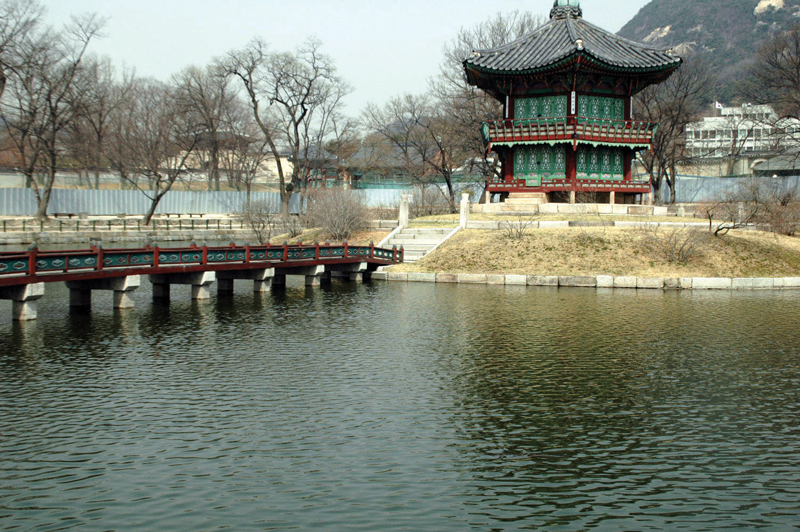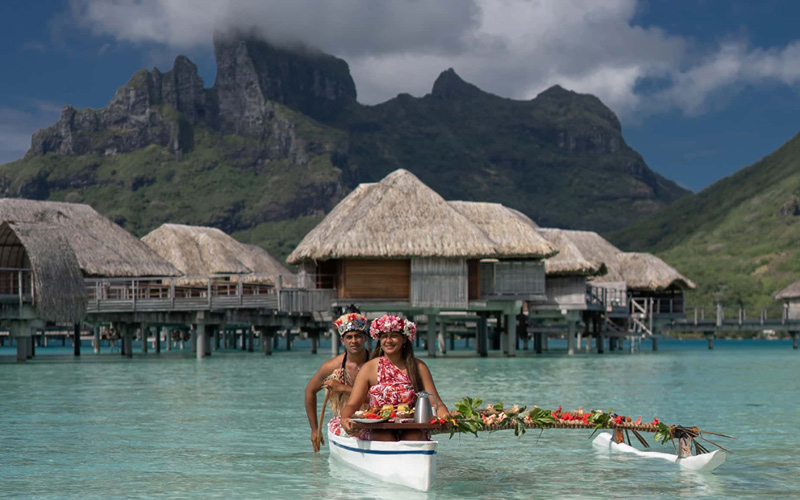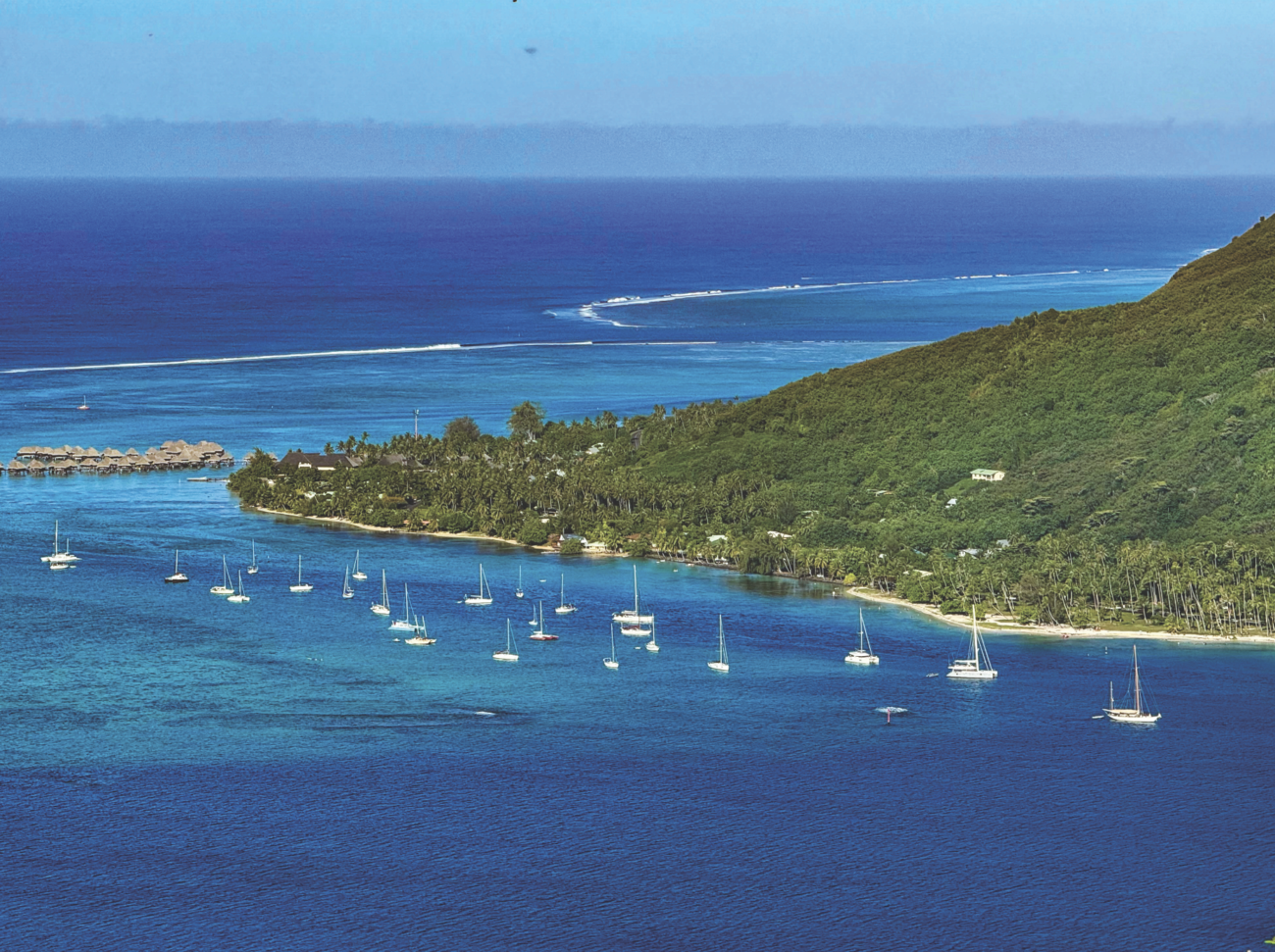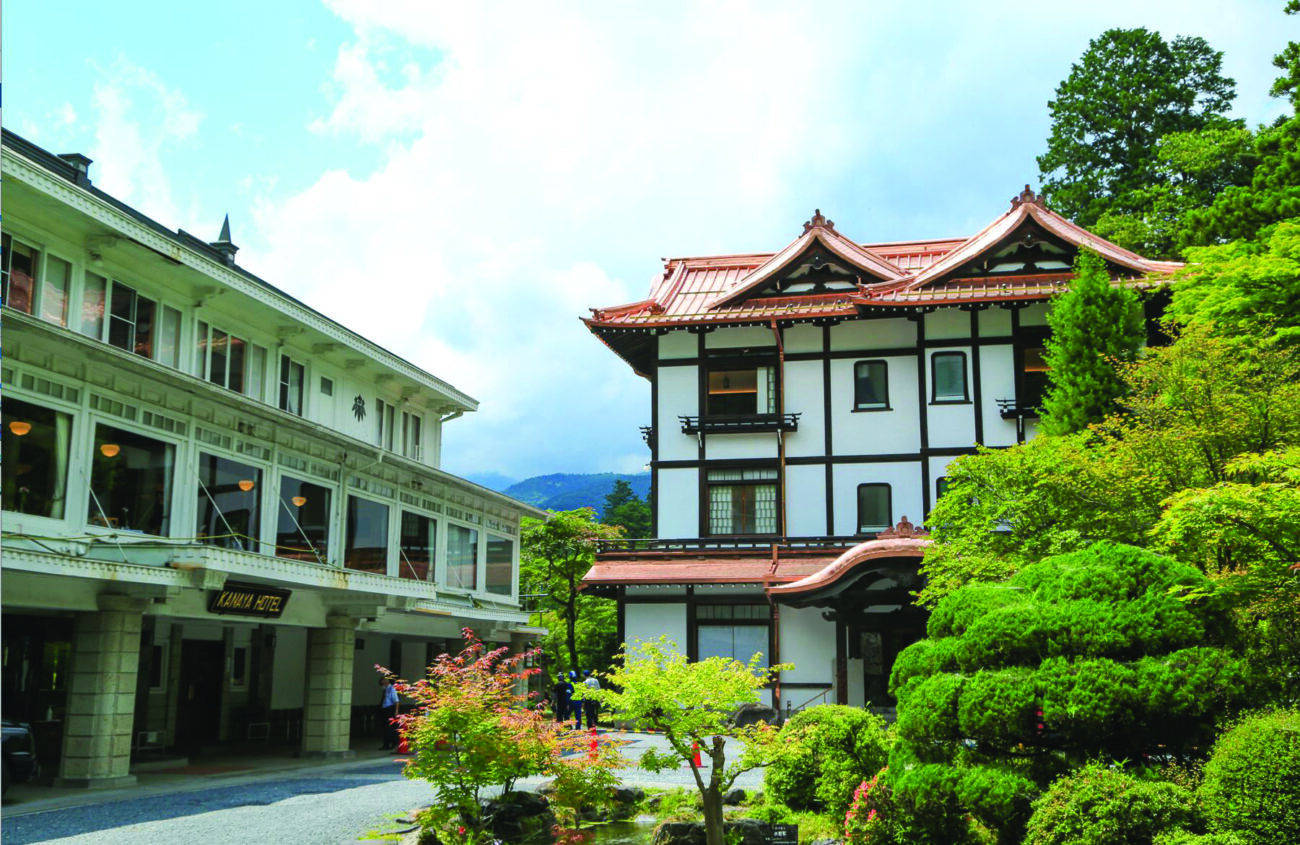Korea: The Old, the New and the Scenic
His rust and gray robes flutter in the breeze.

A Buddhist monk is so absorbed in his cell phone conversation, he doesn’t notice us. This monk could be a poster child for South Korea – part of the modern world but steeped in tradition and beauty.
This once war-torn, Indiana-sized peninsula is indeed beautiful. Seventy percent of it is covered with mountains. Palaces, ancient villages and sprawling, modern cities speckle its undulating landscape. Likely you will begin in Seoul. It bustles with nightmarish traffic amid towering, glass buildings.
For your first Korean trip, do a tourist thing- a typical dinner with a colorful after dinner show. Traditional dancers form beautiful formations using colorful fans.
Find more tradition at the National Folk Museum, the markets, pagodas and the city gates – originally erected in the late 14th century. Completed in 1392, Gyeongbokgung Palace, was once the seat of government. Adjacent to the palace are private dwellings. A large rock, which represents Mt. Everest, sits outside, as does a lotus pool with an arched bridge and lily ponds. It could be a painting. Koreans believe that they get chi from nature.
The DMZ
Stark contrast from this serene scene is the DMZ (demilitarized zone), a short ride from Seoul. Barbed wire dominates the scene. Land mines as big as cars loom at various checkpoints. Ten million mines cover the mostly barren, about 2 1/2 mile-wide DMZ. In 1953 when the Korean War ended in stalemate, the DMZ became the demarcation zone between the north and the south. On each side are about 3 miles of buffer zones. North Korea is visible via telescope at the Dora Observation Area.
The DMZ is not accessible unless you don a hard hat, descend 300 feet in a small open car and amble though a small part of the Third Tunnel. It runs four miles under the river. It is the closest you can get to North Korea.
Back in the sunlight, make your way to the Mangbaetan Monument. Scenes of North Korea decorate the screens behind its giant incense burner. Most poignant is the Freedom Bridge. Notes, prayers, flags and even a picture of Jesus hangs against the wall where the bridge dead ends.
South Koreans never lose hope for reunification. The ultra-modern Dora Train Station and Highway connect to North Korea. Both stand like ghosts, eerily empty.
SEOUL and BEYOND
Much more crowded is Seoul’s main railroad station, the departure point for the KTX – the bullet train. Traveling at 300 kms per hour, it makes a quick trip to Daegu (Day -goo). Daegu’s three million people adhere to tradition and use centuries-old herbal medicines like medicinal teas, herb pouches and even ground antelope horns. One of Daegu’s most colorful areas is Rice Cake Street. These are pastier than our crunchy ones, with shapes and colors that look like shrimp, octopi and eggs.
Near Daegu, red and turquoise temple complexes sit alongside streams on emerald, wooded slopes. The 1,300-year-old Haeinsa Temple was spared bombing during the Korean War because it is usually cloud-covered. Its library of 81,200 cherry wood blocks with Buddha’s teachings are still intact.
At Seokguram Grotto Temple, on the eastern slope of Mount Toham, a huge Buddha sits facing east. One of his hands is pointing downward-pushing down evil; the other points up toward enlightenment.
Enlightenment eludes me during my Beomeosa Temple stay. To seek it, even if it is for one night, I must forsake my worldly possessions and don a gray MIT (monk in training) one-size-fits all uniform. Meditation? Yes, but that comes after a lot of bowing, prostrating during prayer, shoes on/shoes off, hiking up and down the mountain, rising at 3am and meals of unidentifiable vegetables. I leave hungry, tired, and unenlightened.
What a contrast to the bustle of Busan (aka Pusan). From the 394-foot high Busan Tower, neighborhoods crawl up hills that seem to erupt from the sea in Korea’s largest port and second biggest city. A mixture of old and new, it is a landscape of narrow alleyways and wide streets, modern stores and traditional outdoor markets, Buddhists temples and modern high-rise buildings. A “must see” is the United Nations Memorial Cemetery in Korea (UNMCK), Twenty-two different, fluttering flags symbolize the united effort made to defend South Korea.
Enough of the hustle. It’s just a short flight to the unique landscape, waterfalls and relaxing atmosphere of Jeju Island. At the Jusanggjeolli Rock Formation, black volcanic cliffs rise alongside the sea. Koreans often picnic amid the jagged crags. Quirky looking gods and goddesses are carved out of black lava. These comical looking creatures are part of the shamanism that has been practiced here for centuries.
Another beauty, Hallim Park, with its waterfalls, aromatic plants and chirping birds, is a joy to the senses. Lava tube caves are fun to explore. If Hallim doesn’t chill you out, the Spirited Garden (Bunjae Artpia Bonsai Garden) will. The complex of bonsai, bridges, waterfalls, and koi-filled ponds is so serene, people speak in whispers lest they break some kind of spell.
Korea has traditional, modern and natural beauty. It may be small in area, but it looms large with attractions.
IF YOU GO
For more information, visit the Korean Tourist Organization: http://english.tour2korea.com OR http://english.visitkorea.or.kr/enu/index.kto
• Rice is life here. Expect to get it at every meal, along with kimchee – the spicy, pick led cabbage that is a developed taste.
• Try bimbimbop – a hodgepodge of veggies, rice and meat, topped off with a raw egg, and bulgogi – Korean barbeque.
• Say “gombay” before slugging down that booze. Natives will be happy to join you.
• DMZ visits are only possible with an organized tour and a passport.
• Before you embark on a South Korean visit, listen up! Be sure and check the picture on the toilet door lest you find only a “squatter.” If you see toilet paper on the outside, grab it. There will be none inside the stall.





